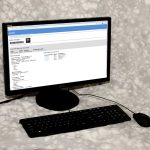I’m finally catching up with myself after an action-packed summer. I’d intended to share much of my summer activities through my blog because, well, it was action packed. However, one of this summer’s actions was the disappearance of my website (more on that later). So, as my site updates its version of WordPress, I thought I’d start catching things up.
TL;DR
In a nutshell, my wife and I went to Honduras for the summer to finish the research on the piClinic Console I’d started a few years ago. Thanks to a Fulbright Scholars Grant, we were able to travel to Honduras for the past two summers to see if I could disrupt healthcare information systems technology in rural clinics.
Short answer, yes.
Of course, many other things happened as well. I’m not sure how many of those adventures will fit in here, but these are some of the things I’ve done since my last (currently published) blog post.
- Spoke at the API the Docs conference in Chicago in April.
- Read a few good books:
- Ruined by Design: How Designers Destroyed the World and What We Can Do to Fix It by Mike Monteiro
- Measures of Success: React Less, Lead Better, Improve More by Mark Graban & Donald J. Wheeler
- Everybody Lies: Big Data, New Data, and What the Internet Can Tell Us About Who We Really Are by Seth Stephens-Davidowitz
- Wrote some thoughts about them in my blog.
- Woke up to find this site had disappeared.
- Got chewed out by my hosting company for not reading the various email they claimed to have sent (but that never arrived).
- Spent the next two weeks on Skype and my slow Internet connection dealing with the aforementioned hosting company trying to find my site.
- Learned they migrated my site using a backup from two months earlier (sending my last two months of posts into the bitbucket).
- Hosted 10 undergraduates on a Mercer On Mission trip to Honduras, in which they conducted research on the piClinic Console and got a taste of Caribbean culture on the Honduran island of Roatan.
- Spent three weeks on the Honduran mainland during some political demonstrations.
- Learned how to SCUBA dive.
- Attended SIGNAL 2019.
So here I am; doing my best to get caught up.




